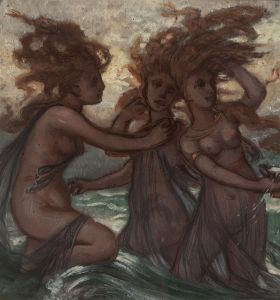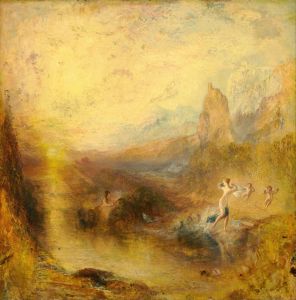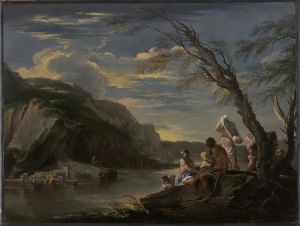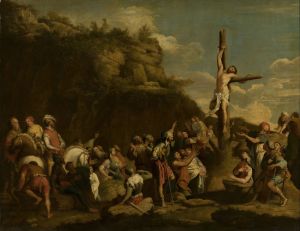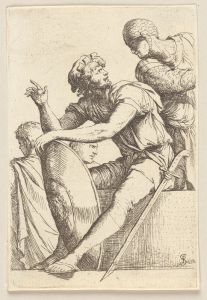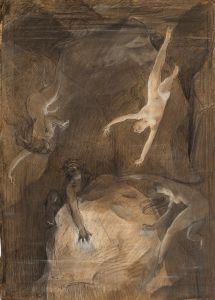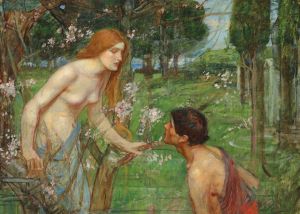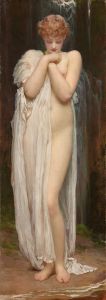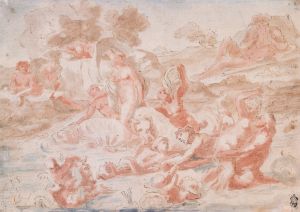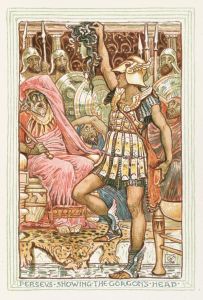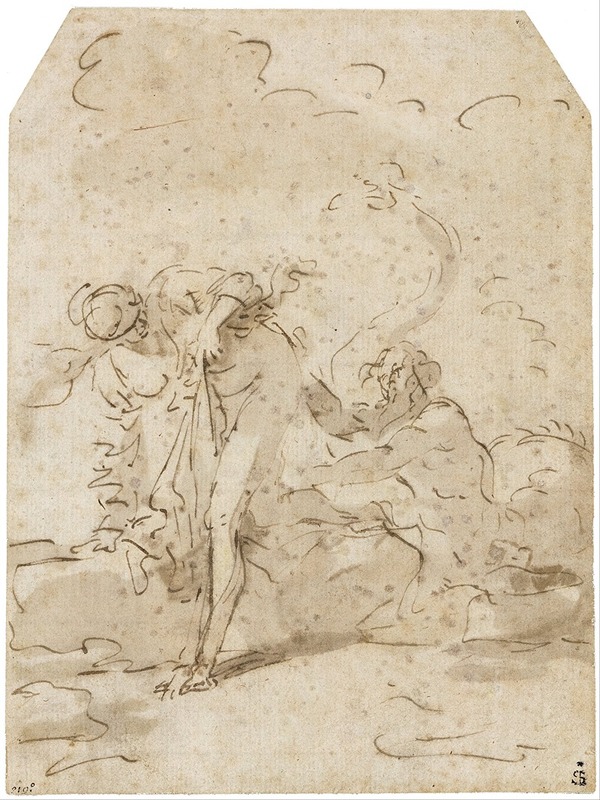
Glaucus and Scylla
A hand-painted replica of Salvator Rosa’s masterpiece Glaucus and Scylla, meticulously crafted by professional artists to capture the true essence of the original. Each piece is created with museum-quality canvas and rare mineral pigments, carefully painted by experienced artists with delicate brushstrokes and rich, layered colors to perfectly recreate the texture of the original artwork. Unlike machine-printed reproductions, this hand-painted version brings the painting to life, infused with the artist’s emotions and skill in every stroke. Whether for personal collection or home decoration, it instantly elevates the artistic atmosphere of any space.
Salvator Rosa's "Glaucus and Scylla" is a notable painting by the Italian Baroque artist, who was renowned for his dramatic landscapes and complex mythological scenes. Rosa, born in 1615 in Naples, was a versatile artist, also known for his work as a poet, actor, and musician. His paintings often reflect his interest in the sublime and the tumultuous, capturing the emotional intensity of his subjects.
"Glaucus and Scylla" depicts a scene from Ovid's "Metamorphoses," a classical text that has inspired countless works of art. The myth involves Glaucus, a mortal fisherman who becomes a sea-god, and Scylla, a beautiful nymph. According to the myth, Glaucus falls in love with Scylla, but she is repulsed by his fish-like appearance after his transformation. In desperation, Glaucus seeks the help of the sorceress Circe to win Scylla's love. However, Circe herself falls in love with Glaucus and, when rejected, takes revenge by transforming Scylla into a monstrous creature.
Rosa's interpretation of this mythological tale is characteristic of his style, which often includes dramatic contrasts and a dynamic composition. The painting likely captures a moment of tension and transformation, reflecting the emotional and physical metamorphosis central to the story. Rosa's use of color and light would have been employed to heighten the drama of the scene, a common technique in Baroque art to evoke an emotional response from the viewer.
Salvator Rosa's work is often noted for its rebellious spirit and the way it challenges traditional artistic conventions of the time. His paintings frequently include elements of the wild and untamed, both in nature and in human emotion, which can be seen in the turbulent seas and the intense expressions of his characters. This approach aligns with the Baroque period's fascination with movement, tension, and the exploration of human passions.
While specific details about the exact composition and current location of "Glaucus and Scylla" by Salvator Rosa are not widely documented, his works are held in various prestigious collections around the world, including the Louvre in Paris and the National Gallery in London. Rosa's influence extends beyond his paintings; his writings and satirical works also contributed to his reputation as a critical and independent thinker of his time.
In summary, "Glaucus and Scylla" by Salvator Rosa is a representation of a classical myth through the lens of Baroque artistry, emphasizing drama, transformation, and the complexities of human emotion. Rosa's unique style and thematic focus make his interpretation of this myth a significant contribution to the artistic depictions of Ovid's tales.





